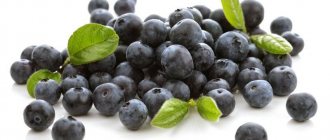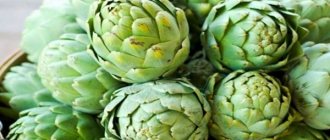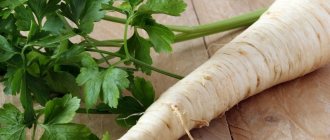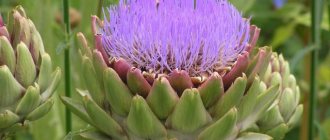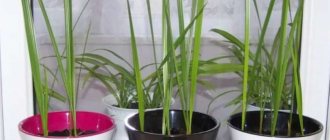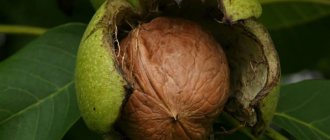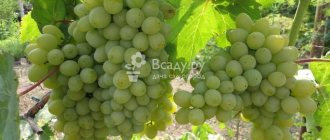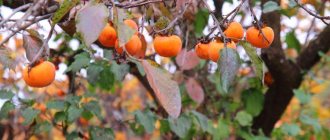How to plant peanuts at home in the country
To grow peanuts on your plot you need:
- have an area that is not shaded during daylight hours. Groundnut is a long-day plant;
- The crop is thermophilic; in warm climates, the process of formation of new ovaries continues at a temperature in the soil layer of at least +13 °C, the minimum outside temperature is 19...23 °C. Higher values activate the growth of underground and aboveground parts;
- needs regular watering. Relative soil humidity should be maintained at a level not lower than 45...50%;
- As the above-ground part develops, it is necessary to hill up. As a result of covering the shoots with soil, new fruit ovaries begin to form on them.
During the season, you have to hill up peanuts at least 4…6 times.
Features of the plant and where it is grown
Brief recommendations for growing:
- peanuts, like artichokes, are annual crops, so they need to be harvested annually and re-sown in the spring;
- sowing is carried out to a depth of 5...8 cm when the soil warms up to more than 12 ° C;
- light and loose soils are required (density 1300...1450 kg/m³), preference should be given to areas with a neutral or slightly alkaline reaction pH = 7.0...7.5. The presence of plant residues is welcome;
- Cereals or nightshade crops are considered good predecessors. Repeated plantings are possible after 3-4 years. It is not advisable to sow peanuts after peas, vetch and other legumes;
- the legume plant produces oil (35...40%) and protein (12...14%);
- flowers are formed on the above-ground part, after pollination they descend to the ground. They are immersed in the ground, where they form several fruits in the form of large oval peas in a dense peel. To activate the formation of new flowers, you need to “help” the plant by sprinkling the fruit parts with soil;
- Areas where there is no wind are preferred. Therefore, in countries where underground walnuts are cultivated, crops are planted in areas around which there are shrubs or low trees (orchards, vineyards or berry fields).
Growing conditions
To obtain a high yield, experts from different countries offer methods for preparing fields for growing peanuts.
- Preparing the soil for subsequent crops begins in the fall. Peanuts prefer soils with a high humus content (4.0...4.5% and above). Therefore, in September-October, white mustard is sown, which is planted in the ground with the onset of the first frost (early November).
- In the fall, it is advisable to carry out digging (in the conditions of a household plot) or plowing with rotation of the layer (plowing depth of at least 22...24 cm).
- If conditions permit, snow retention operations are carried out during the winter. They roll the snow with heavy equipment, then the wind will not blow the snow cover from the surface.
- In early autumn, it is possible to apply liquid organic fertilizers. The application rate is 12…15 t/ha (1.2…1.5 kg/m²). Preference is given to slurry from cattle farms.
- In countries where industrial rabbit breeding has become widespread (China, Spain, Portugal, Korea), rabbit manure is used. It is applied not only in the fall (0.10...0.15 kg/m²), periodic fertilizing is carried out throughout the entire season (up to 0.05...0.07 kg/m²).
- Before planting, loosening is performed using a rotary cutter, harrowing or chiseling is used.
- To control weeds, immediately after sowing, continuous treatment with herbicides is carried out.
In Asian countries, weed control is carried out by regular weeding, the yield increases by 20...25%. Combine operations with hilling.
Is it possible to plant in open ground in Ukraine?
There is quite an interesting experience in growing peanuts in Ukraine. At TSNIPTIMEZH (Zaporozhye), in the laboratory of forage crops, research was carried out on the industrial cultivation of groundnuts as a feed additive (1979-1984). It has been established that in a number of areas this crop is promising for cultivation in open ground.
At the Melitopol Institute of Agricultural Mechanization (MIAMA) at the Department of Agricultural Machinery under the guidance of prof. Kushnareva A.S. work was carried out to prepare the soil for sowing and subsequent agrotechnical measures for growing peanuts.
On the experimental fields of the educational farm, yields of up to 350...400 c/ha were achieved. The indicators are comparable to potatoes. The nutritional value of the product is much higher.
Based on research, recommendations have been developed for cultivating this crop in Ukraine:
- soil preparation by deep loosening to a depth of 22 cm, the average granulometric composition of soil lumps should be 12...24 mm;
- sowing should begin in early May (depending on the characteristics of a particular year, shifts of 10...12 days to earlier or later dates are possible);
- sowing is carried out using trailed seeders to a depth of 5...8 cm;
- distance between rows – 60...70 cm;
- seeding density – every 15...20 cm in a row.
Subsequent agrotechnical measures proposed by a group of researchers led by prof. Kushnareva A.S.:
- continuous treatment with herbicides aimed at destroying monocotyledonous weeds is carried out on the third to seventh day after sowing;
- application of mineral fertilizers (phosphorus and potassium fertilizers in the form of granules). The work is carried out using fertilizer sowing machines;
- when the height of the seedlings is 5...8 cm, hilling is carried out to a height of 3-4 cm (disk hillers are used). The purpose of this operation is to form a powerful root system. Repeated hilling is carried out every two weeks. As a result, by the beginning of flowering, the height of the ridges reaches up to 25...28 cm;
- Repeated feedings are carried out 25...30 days after the first. Apply up to 12 g/m² of phosphorus fertilizers (double superphosphate) and 7...8 g/m² of potassium fertilizers (potassium nitrate, KaNO₃);
- after the first flowering (usually observed 40...45 days after emergence), hilling is necessary, performed with rotary cutters;
- the regime of subsequent hilling depends on the regularity of subsequent waves of flowering. May last until the first ten days of September;
- Harvesting is recommended to be done at the end of September or the first ten days of October. They use plows to turn over the layer, as well as potato harvesting equipment with belt shakers (the width of the cells on the belt is no more than 10...12 mm).
By 1986, machines and mechanisms were developed for the comprehensive mechanization of work in growing peanuts. They were mounted with tractors MTZ-80, YuMZ-6, T-28A and T-40M.
Options for using the T-16M self-propelled chassis or the T-25 tractor for harvesting were also considered.
How to grow in Central Russia
Growing peanuts in central Russia poses certain difficulties. The weather may be unstable, which will not allow for a sufficiently high harvest. Research into the possibilities of groundnut sowing and industrial production was studied at the Voronezh Agricultural Institute (1979...1984).
The following recommendations have been developed:
- preparation of sown areas consists of plowing to a depth of 24...30 cm;
- destruction of lumps and loosening using a zigzag harrow;
- sowing to a depth of 4-7 cm;
- rows: width 70 cm, distance between plants 20-25 cm;
- seeders for mechanized seeding: STVT-4, SCHH-4A, SK-3.6; HRC-6; UPS-8;
- cultivator for inter-row cultivation: KON-2.8; KPS-6.0; KPS-5.0; KPK-4; KPM-16. Must be equipped with disc hillers;
- planting plow for excavating the underground part of peanuts PPN-50;
- conveyor trailed to the MTZ-82 (MTZ-52) tractor TPU-1.2;
- tractor trailer 2PTS-4;
- Threshing is carried out on a paved area using grain combines without a header SK-4 (SK-5).
It has been established that in a number of regions of the Central and Central Black Earth regions of Russia it is possible to successfully grow peanuts.
Growing peanuts through seedlings
- Sowing in March-April.
- Fruit ripening period 120−160 days
- I first left it for germination for a couple of days, when a small root appeared, I planted it in the ground.
- Seed placement depth – 1.5 seed sizes
- Grow in the light.
- Shoots in about a week - ten days.
- A week after emergence, peanuts can be fertilized with complex fertilizer.
Step-by-step instructions for planting in the garden
Site preparation and soil selection
1. Select a site for planting:
- need a sunny place;
- It is desirable to have vegetation around that will protect the future plantation from the wind;
- soil with a high humus content.
For planting, the soil reaction should be neutral or with a slight shift towards the alkaline side.
2. Preparation begins in the fall:
- during the warm period, white mustard is sown;
- it should be incorporated into the soil when frost occurs. The plant does not tolerate cooling below +1...+2 °C, so it dies on a frosty night;
- deep digging or plowing will increase the nutritional value of the soil;
- In the spring the area is fertilized. Fertilizer application will be required according to the data in the table. 1;
- 20...30 days before the start of sowing peanuts, deep loosening is carried out. In a small area, you can use the “Mole” ripper. If you have a walk-behind tractor equipped with cutters, use a mechanical assistant;
- it is desirable to obtain an average particle size distribution of 12...25 mm;
- Furrows need to be cut 5...7 days before sowing. Their depth is 7...9 cm. They should be located at a distance of 65...75 cm.
Table 1: Fertilizers to be applied to the soil before planting peanuts
| Type of fertilizer | Chemical formula | Application quantity, g/m² |
| Urea (urea) | (NH₂)₂CO | 15…18 g/m² |
| Superphosphate | Ca(H₂PO₄)₂·H₂O + CaSO₄ | 12…16 g/m² |
| Potassium salt | K₂O | 7…8 g/m² |
Seed selection and preparation
Seeds can be purchased at the Seeds retail chain or analogues. Periodicals quite often offer seed material for certain types of plants. Using the addresses, it is easy to order the desired types of crops that will be cultivated on the site.
Raw peanuts are quite often sold in markets. It is sold peeled or with peel.
To check seeding material from the market, a test seeding of 10 peanut peas is done:
- Carefully remove the peel.
- The resulting seeds are soaked in a solution (0.5 g of table salt and 1 grain of magnesium permanganate are added to 1 glass of warm water; the mixture turns pale pink). To stimulate growth, you can add 1 drop of Epin. Duration 1…2 hours.
- Germination is carried out on peat tablets. They are laid out on a flat surface (flat plate or saucer).
- Pour water to a height of 6...8 mm.
- Place one pea on each tablet.
- Place in a warm place, you need a temperature of 22...25 °C.
- Observe swelling and sprout formation. If sprouts appear within five days, then germination is calculated. If a result of more than 60% is obtained, the seed is suitable for cultivation in open ground.
A calculation of planting material is required. Count the number of rows. Knowing the length of the ridges, the number of sprouts is determined (sowing at a distance of 20 cm is assumed). The result obtained is multiplied by two. Two peas will be planted in each hole. Peanuts are purchased in the quantity required for planting.
Five days before the scheduled sowing date, preparations are carried out. It is performed according to the algorithm described above.
Planting: how to plant correctly
In open ground
On a warm day, the sprouted seeds are planted in the soil. The air should be heated to 19...22 °C.
- The beds are shed with a slightly pink solution of manganese peroxide. The liquid temperature should be 90...95 °C. Soil disinfection is necessary.
- Place the sprouts, 2 peas, in each hole (every 20 cm). For convenience, use a measuring rod; it helps to maintain a given interval between plants.
- Sprinkle the top with soil up to 5...8 cm high.
- You can additionally cover the beds by stretching a plastic film 30...40 cm wide. It is sprinkled with earth so that the wind does not blow it away.
Under the film, even at night, a higher temperature will remain. It stimulates more intensive growth.
Seedlings
Many gardeners, wanting to get a larger harvest, sow groundnut seedlings.
- Seedlings are grown in advance (12...17 days). Prepare peat pots with a volume of 50 ml. They are filled with soil intended for growing tomatoes or sweet peppers.
- The hatched seeds are immersed to a depth of 5...6 cm (almost to the bottom). Seedlings are grown in this container.
- Subsequently, they are planted in open ground.
- To protect against frost, use halves of plastic bottles with a volume of 1.5...2.0 liters. They are placed above the planted plants. They are removed during the day and covered at night.
- If frosts are possible, then additionally install supports for greenhouses. Cover with non-woven fabric having a density of 45…60 g/m².
- With the onset of warm days, the shelters are removed. When the weather worsens (there are rainy summers), protective shelters are installed; they will maintain the required temperature to support the growth of peanuts.
Pests and diseases
Peanuts can become ill with both infectious and non-infectious diseases, signaling this by their appearance:
- Iron deficiency immediately affects the yellowing of the leaves, the appearance of necrosis spots, which gradually occupy the entire leaf area.
This leads to the death of plants. Iron deficiency occurs when carbonates in the soil block the absorption of iron. This causes metabolic disturbances. A lack of substance is observed in compacted soil, sudden temperature changes, waterlogging, and when the soil is oversaturated with nitrates or phosphorus. To avoid this phenomenon, you should select varieties suitable for the conditions of the area and for the soil (Orpheus, Rositsa). If the process is in effect, the drug Kugoplex is applied to the ground according to the instructions. - Powdery mildew. Powdery spots appear on both sides of the leaf, gradually increasing in size.
The leaves turn yellow and fall off. The disease moves to the stems, causing the plant to die. The pathogen (mycelium) of the disease persists on the weeds and is not afraid of even winter frost. Optimal conditions for the development of powdery mildew are high humidity at any temperature, plant weakness caused by various negative factors. Complex action means are used to fight. - Phyllosticta is caused by the fungus Phyllosticta arachidis M. Ghochr.
Initially small, then brown spots reaching 5-6 mm in diameter throughout the leaf cause its necrosis and falling. The time of manifestation is the end of the growing season. The fungus is transferred from the remains of infected plants. The pathogen is released at high humidity. Note! To prevent the disease, infected stems should not be left in the soil or sown in one place for more than three years. When a disease occurs, a fungicide is used. - Alternaria (black spot). On old leaves, black spots 10-15 mm in diameter appear, shaped like a circle.
At high humidity, a coating of the fungus (Alternaria (Fr.) Keissl.) also affects the fruits. It appears from plant residues preserved in the soil. If you follow agrotechnical standards and timely harvesting, the disease will not occur. - Gray rot. From flowering to harvesting there is a risk of infection.
The pathogenic fungus Scklerotiniaarachidis Hanzawa penetrates through wounds and appears as brown spots on leaves, stems, and fruits. The bush does not bear fruit or its beans are of poor quality. Since there is always a threat of infection, it is necessary to change the sowing location after 2-3 years, do not over-water, and harvest on time. - Aphids and caterpillars are removed using wood ash and tobacco dust sprinkled on the garden bed. Thrips are destroyed by insecticides. The worst pests for peanuts, wireworms (larvae of the click beetle), which eat beans, are eliminated by digging holes in different places. Pieces of vegetables are placed in them and covered loosely with boards or slate. When enough larvae crawl into the traps, they are destroyed.
Care
Peanuts, like lemon and mango, do not require much labor to grow. At the germination stage, weeds must be controlled. Therefore, after the sprouts appear, weeding is carried out.
It is necessary to keep the soil moist. Watering is carried out as the soil layer dries. Arrange irrigation along the furrows. The grooves between the plants serve as natural reservoirs filled with water. To avoid losses, soil is sprinkled at the ends. It will not allow excess to flow beyond the plantings.
Loosening is carried out a day or two after watering. It is necessary to destroy the soil crust.
Hilling
The first hilling is carried out during the first weeding. The sprouts are sprinkled with a layer of soil 2…3 cm high. Read about the temperature for tomato seedlings here.
Subsequent hillings are carried out every 10…15 days. The level of the soil layer is brought to 25...30 cm (in Central Asia, where the summer period is longer than in the European part of Russia, the level is brought to a height of 50...60 cm).
Hilling must be carried out before and after flowering.
The ovary itself begins to bend towards the ground, trying to hide in the depths. It is at this time that the plant needs help, which the gardener can provide by sprinkling 4...6 cm on top. Read about the principle of action of phytosporin for currants in this material.
Feeding
Nodule bacteria develop in the root part. Therefore, plants need only phosphorus and potassium fertilizers. They are applied by scattering granules the day before watering. By organizing irrigation along the furrows, they achieve the dissolution of mineral fertilizers and their penetration into the soil in the root part.
Application rates are shown in table. 2.
Table 2: Fertilizers to be applied to the soil during peanut growing
| Type of fertilizer | Chemical formula | Application quantity, g/m² |
| Superphosphate | Ca(H₂PO₄)₂·H₂O + CaSO₄ | 17…20 g/m² |
| Potassium salt | K₂O | 12…14 g/m² |
During the season, three or four feedings are performed with a frequency of 25...30 days.
Varieties of varieties
The most common varieties are:
- "Runner";
- "Virginia";
- "Spanish";
- "Valencia".
The varieties differ in oil content and kernel size. The Runner variety has a fairly high yield. The nuts are very tasty, can be roasted, and in the United States they are used to make peanut butter. The Spanish variety has a very high oil content. Virginia nuts are larger than those listed above, so they are often used for the production of salted peanuts and in confectionery products. The Valencia variety has large kernels. The pods generally contain three oval-shaped kernels.
New varieties are constantly being developed that are increasingly resistant to the climatic conditions of the central and even northern parts of Russia, so ask about how to plant peanuts when purchasing a particular variety. Sellers in specialized stores will be happy to provide such information, because it is generally accepted.
Harvesting and storage, drying of fruits
Harvesting begins in mid to late September. You need to have time to remove it before daytime temperatures drop below +8...+10 °C. Then the quality of the harvest will not decrease. To clean, you need to dig up the root part with a fork. This article will tell you about treating tomato seeds before planting seedlings.
You need to dig up the bush on both sides of the bed. After carefully shaking it off, it is taken out and placed on a garden cart. They are taken to the site, under a canopy, where the beans can be separated from the stems.
Drying of beans is necessary. Use household dryers in which the temperature is maintained at no more than +45...+48 °C. For large volumes of grown peanuts, heliofruit dryers are used. Enterprises where the area under this crop amounts to tens of hectares use industrial belt dryers.
Dried fruits are stored in bags or craft bags, boxes that protect the collected beans from rodents.
Types and varieties of peanuts
Several varieties of groundnuts are found in cultivation. They differ in yield, kernel size, height and spreading of the plant, and ripening period.
Cultivated peanuts are divided into groups:
- Virginia. They have excellent taste and are used in the preparation of desserts, ice cream, and chocolate. Representatives of the group are varieties Gull, Gregory, Perry, etc.
- Spanish (Spanish). The modest size of the nuts and the low yield of this group are offset by the high oiliness of the kernel. Common varieties are Comet, Star, Argentine and others.
- Valencia (Redskin). The peculiarity of plants of this group is the large size of the nuts, their bright color, and the absence of small grains. Representatives of the group are the variety of the same name, as well as “Valencia C” bred on its basis.
- Runner. They are characterized by consistently high yields and excellent nut taste. Popular varieties are Egyptian giant, Tamran, Georgia green, etc.
Among the well-known varieties of domestic selection are Stepnyak, Bayan, Zhelud, etc.
Other growing methods
In addition to traditional cultivation technology, other technologies are also used.
On warm beds
Warm beds are arranged in the fall. For self-heating in the spring, they are filled with manure. With the onset of warm days, heating of biofuel is necessary. Several buckets of warm water with a temperature of +30...+40 °C are poured onto the garden bed. This procedure triggers the self-heating mechanism of the soil. This link will tell you about the wine and grapes of Chardonnay.
To prevent heat from being lost into the environment, arcs are installed over the soil and a non-woven fabric is stretched over them. It will retain the heat necessary for the crop being grown.
Sowing of seedlings or sprouted beans is carried out when daytime temperatures have a stable transition to positive values. The amount of heat generated will be sufficient to maintain a stable thermal regime in the peanut growth zone.
At home in an apartment
Can be grown indoors. Containers are used for this. They are installed on windows or placed on metal frame shelves.
Use purchased soil or garden soil. Peanuts are usually planted in February. Sometimes you have to place a second container next to it, parallel to the first. The ovaries of future beans will be buried in it.
Harvest in September-October.
In the greenhouse
Residents of Siberia and the Urals can plant groundnuts in greenhouses. The microclimate inside protected soil structures made of cellular polycarbonate allows you to grow a heat-loving plant from April to October. Read how to grow lychees from seeds here.
Agrotechnical measures are the same as for growing in open ground. In the summer, greenhouses will have to be ventilated so as not to cause overheating of the plants.
Greenhouse or open ground - what to choose?
For successful development and fruiting, peanuts need an abundance of sunlight and fresh air.
Considering that the weather conditions in the central zone are quite suitable for growing the plant in open ground , choosing this particular method will be the right one.
The problem of prolonged night frosts and prolonged rains can be solved by covering the plants with transparent plastic film.
Conclusion
- Peanuts are an excellent raw material for cooking and perfumery.
- Heat-loving crops such as peanuts, pineapple and orange are grown in areas heated by sunlight throughout the day.
- Peanuts require light soils with a high humus content.
- You can achieve high yields by following the sequence of agrotechnical measures described in the technological maps for growing crops.
- In suburban areas you can grow peanuts for your own needs.
- You can grow groundnuts at home or in a greenhouse.
What is important to know
You can grow peanuts in the Urals in a greenhouse, since the average temperature will not allow the kernels to reach ripeness, and temperature changes can generally ruin the plant. It is better to plant peanuts together with tomatoes. They will influence each other favorably. The peanuts will supply the tomato bushes with nitrogen, and the tomatoes, due to their height, will not steal sunlight from the peanuts.
So, as you can see, growing peanuts yourself is not at all difficult. Moreover, this product is so popular that it is used in cooking or for preparing special skin products at home. Have a bountiful and delicious harvest!
Seed selection and preparation
I purchased the seeds of my first, experimental peanuts at the vegetable market - I bought ordinary raw nuts from a seller. You can follow my example - the main thing is that the seed is not fried, salted or candied. Another option is to buy at a garden center or order a certain variety of crops online.
Peanut seeds do not require any preparation - they have excellent germination. But I still soak it before sowing - I place it in a damp cloth envelope. Then - into a thick plastic bag, which I tie tightly. After a day, the nuts are ready for sowing.
